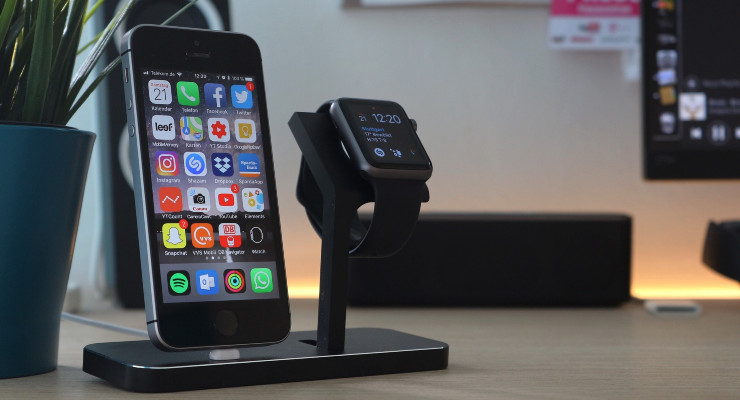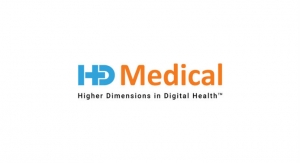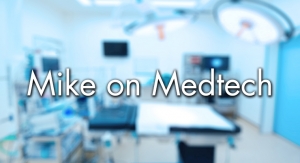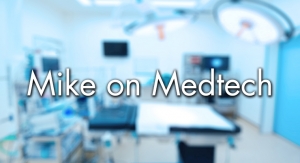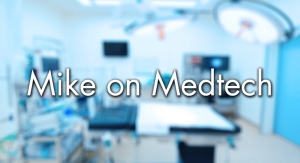Maria Shepherd, President and Founder, Medi-Vantage07.21.20
Could (and should) Apple be doing more in healthcare? Apple’s goals are still largely aspirational in the medical space, despite public announcements such as CEO Tim Cook’s prediction that health will ultimately be the company’s “greatest contribution to mankind.”1 Apple is building its bench with teams of physicians and engineers creating software and hardware to address the healthcare market. New products like its electrocardiogram-equipped Apple Watch offers a real-world example of the firm’s efforts to democratize healthcare information.
Why This Is Important
Apple, Microsoft, Google, Amazon—they all want to be in the healthcare space, and the scale of their businesses provides them resources much greater than what’s seen in traditional medtech. These companies are targeting healthcare; medtech entrepreneurs and startups can either work with or against them.
What Has Apple Done So Far?
Apple is not the worldwide smartphone market leader (Table 1). In the U.S., the sales of iPhones as compared to Android are shrinking. iPhone sales dropped from 38.1 percent in 3Q18 to 36.1 percent in 3Q19, a drop of 2 percent. Android increased by 1.8 percent from 61.8 percent in 2018 to 63.6 percent in 2019.3
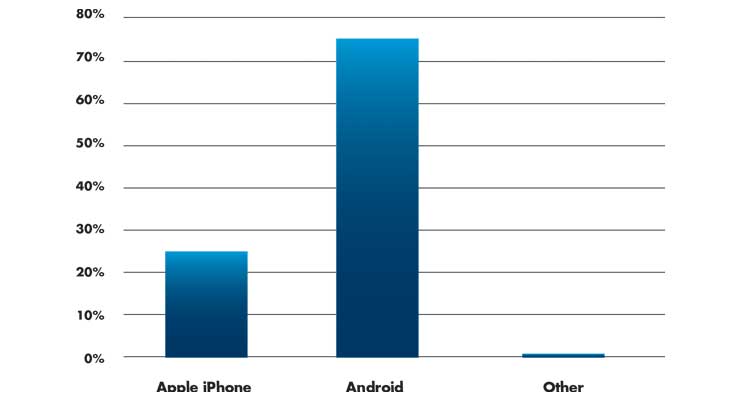
Table 1: June 2019 to June 2020 mobile operating system market share worldwide2
In China, the dogs in the fight are not limited to Apple and Android leaders like Samsung. Local Chinese brands account for 79.3 percent of sales in the Chinese market. Huawei and Honor combined have a 46.8 percent market share, easing the impact from the U.S.-China trade dispute.3
Apple has successfully targeted the Big-Five European markets against Android (Table 2), leveraging the strengths of the iPhone 11 and 11 Pro. In the latest smartphone study4 for 3Q19, the iPhone accounts for 19 percent of all smartphone sales across Germany, France, U.K., Spain, and Italy. Android’s market share across the five markets remained dominant, even though they lost a slight amount of market share (down 1.5 percent in the quarter). Other operating system usage declined from 0.7 percent market share to 0.2 percent. Lower unit market shares for the iPhone contrast sharply with Android revenues, due to the immense price difference between the two smartphones.
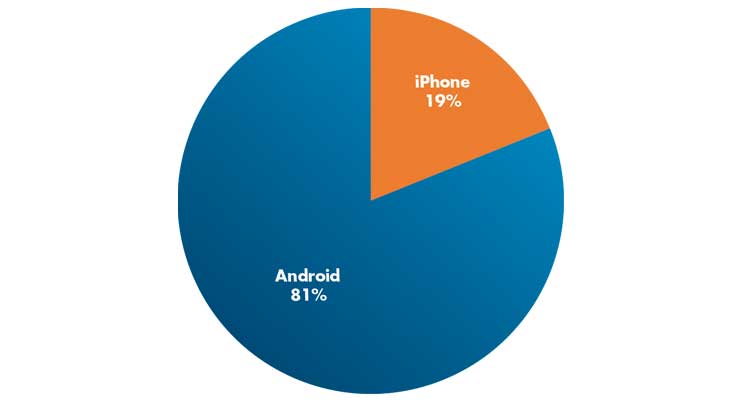
Table 2: Big-Five EU Market Share for iPhone vs. Android4
Apple is grabbing the healthcare flag and running with it via an exciting new portfolio of products and services in healthcare.
First and foremost is the Apple Watch. Apple positions health as a use case and as a brand. The Apple Watch provides heart rate monitoring, with an ECG to detect heart rhythm irregularities, activity tracking, integration with third-party wellness apps, fall detection alerts, and more.
An example of a third-party wellness app is diabetes-focused Steady Health, a startup company dedicated to improving diabetes care using data and digital tools.5 Steady Health states the Apple Watch is most useful when it tracks exercise and integrates data from a continuous glucose monitoring device. Many patients of Steady Health have Apple Watches or iPhones, and review that data along with blood glucose levels and food intake.
In addition, Apple is trying to get patients to incorporate lab results and medical history into their iPhones.6 Apple Health Records is another electronic medical record (EMR) that still has some software usability issues to work out. The largest EMRs have built firewalls around access to patient records and are bare-knuckle fighting over market share. Currently, Apple Health Records patients must remember which doctors and hospitals they have seen and log into those portals to capture the data.
Apple’s California-based employees can use AC Wellness, its own internal healthcare system.7 What better way for Apple’s health technology teams to learn about delivering care?
For the COVID-19 pandemic, Apple has teamed with Google to create contact tracing technology for smartphones. These will allow public health experts to build apps to track patients who have been exposed to the coronavirus.
A Double-Edged Sword
It’s no surprise physicians are of two minds regarding the use of patient health devices. Some doctors are pro-use, citing increased patient attention to personal health, while others feel analyzing patient-generated information is overwhelming and something they aren’t reimbursed for. Many doctors are uncertain about the accuracy of wearables when tracking patient health data. In addition, to make patient-generated data usable, it must integrate better with an EMR dashboard so the care team can see trends in a structured way.
A Finger in Every Pie
Apple is increasing its healthcare revenues by partnering with insurers like Aetna to market and sell more of its devices. In some programs, patients can pay down the price of a device like the Apple Watch while demonstrating healthy behavior.8 Apple has also reportedly begun discussions with private Medicare plans about subsidizing Apple Watch costs for seniors.
There is a longer game here. In the future, Apple could own a body of clinical evidence to get into the business of population health risk management. If Apple can improve the quality of care and reduce costs, it will reach the holy grail that supports AI in healthcare.
Preventive health will expand the Apple Watch’s market opportunity. Expect more game-changers if Apple can introduce non-invasive glucose or blood-pressure monitoring sensors. With sensors like these, the market for a home-use device on a smartphone increases dramatically. At that point, Apple’s iPhone could reach a much bigger market. It is estimated 60 percent of Americans have one or more co-morbidities9 and one out of every three Americans are at high risk for Type 2 diabetes (Table 3).10

Table 3: The Apple opportunity in U.S. preventive health9,10
Where Should Apple Go Next?
Telemedicine: Post COVID, this is a no-brainer. Apple could help by preventing patients from unnecessary visits to the emergency room or specialists through an online triage system.
Sleep tracking: Greater than 50 million Americans suffer from sleep disorders; an additional 20 to 30 million suffer intermittent sleep problems each year.11
Women’s health: More complete tracking for menstruation, fertility, and reproductive health.
Food logging: There are apps that track the caloric content of food but estimating the volume is the true opportunity. Take a picture of the food and let Apple determine the sugar content and/or the amount of exercise required to burn it off.
The Medi-Vantage Perspective
We have several early-stage clients utilizing the strengths of the big four (Google, Apple, Microsoft, and Samsung) to harness their investment in healthcare. Also, is your device compatible with the iPhone to collect the data? If your device utilizes the cloud in any way, consider leveraging a smartphone, especially if you are targeting patients. The cost of HIPAA compliance is an issue, but the price for this certification will be coming down.
References
Maria Shepherd has more than 20 years of leadership experience in medical device/life science marketing. After her industry career, including her role as VP of marketing for Oridion Medical, where she boosted the company valuation prior to a Medtronic acquisition, director of marketing for Philips Medical, and senior management roles at Boston Scientific Inc., she founded Medi-Vantage. Medi-Vantage provides marketing and business strategy and innovation research for the medical device industry. Visit her website at www.medi-vantage.com.
Why This Is Important
Apple, Microsoft, Google, Amazon—they all want to be in the healthcare space, and the scale of their businesses provides them resources much greater than what’s seen in traditional medtech. These companies are targeting healthcare; medtech entrepreneurs and startups can either work with or against them.
What Has Apple Done So Far?
Apple is not the worldwide smartphone market leader (Table 1). In the U.S., the sales of iPhones as compared to Android are shrinking. iPhone sales dropped from 38.1 percent in 3Q18 to 36.1 percent in 3Q19, a drop of 2 percent. Android increased by 1.8 percent from 61.8 percent in 2018 to 63.6 percent in 2019.3

Table 1: June 2019 to June 2020 mobile operating system market share worldwide2
In China, the dogs in the fight are not limited to Apple and Android leaders like Samsung. Local Chinese brands account for 79.3 percent of sales in the Chinese market. Huawei and Honor combined have a 46.8 percent market share, easing the impact from the U.S.-China trade dispute.3
Apple has successfully targeted the Big-Five European markets against Android (Table 2), leveraging the strengths of the iPhone 11 and 11 Pro. In the latest smartphone study4 for 3Q19, the iPhone accounts for 19 percent of all smartphone sales across Germany, France, U.K., Spain, and Italy. Android’s market share across the five markets remained dominant, even though they lost a slight amount of market share (down 1.5 percent in the quarter). Other operating system usage declined from 0.7 percent market share to 0.2 percent. Lower unit market shares for the iPhone contrast sharply with Android revenues, due to the immense price difference between the two smartphones.

Table 2: Big-Five EU Market Share for iPhone vs. Android4
Apple is grabbing the healthcare flag and running with it via an exciting new portfolio of products and services in healthcare.
First and foremost is the Apple Watch. Apple positions health as a use case and as a brand. The Apple Watch provides heart rate monitoring, with an ECG to detect heart rhythm irregularities, activity tracking, integration with third-party wellness apps, fall detection alerts, and more.
An example of a third-party wellness app is diabetes-focused Steady Health, a startup company dedicated to improving diabetes care using data and digital tools.5 Steady Health states the Apple Watch is most useful when it tracks exercise and integrates data from a continuous glucose monitoring device. Many patients of Steady Health have Apple Watches or iPhones, and review that data along with blood glucose levels and food intake.
In addition, Apple is trying to get patients to incorporate lab results and medical history into their iPhones.6 Apple Health Records is another electronic medical record (EMR) that still has some software usability issues to work out. The largest EMRs have built firewalls around access to patient records and are bare-knuckle fighting over market share. Currently, Apple Health Records patients must remember which doctors and hospitals they have seen and log into those portals to capture the data.
Apple’s California-based employees can use AC Wellness, its own internal healthcare system.7 What better way for Apple’s health technology teams to learn about delivering care?
For the COVID-19 pandemic, Apple has teamed with Google to create contact tracing technology for smartphones. These will allow public health experts to build apps to track patients who have been exposed to the coronavirus.
A Double-Edged Sword
It’s no surprise physicians are of two minds regarding the use of patient health devices. Some doctors are pro-use, citing increased patient attention to personal health, while others feel analyzing patient-generated information is overwhelming and something they aren’t reimbursed for. Many doctors are uncertain about the accuracy of wearables when tracking patient health data. In addition, to make patient-generated data usable, it must integrate better with an EMR dashboard so the care team can see trends in a structured way.
A Finger in Every Pie
Apple is increasing its healthcare revenues by partnering with insurers like Aetna to market and sell more of its devices. In some programs, patients can pay down the price of a device like the Apple Watch while demonstrating healthy behavior.8 Apple has also reportedly begun discussions with private Medicare plans about subsidizing Apple Watch costs for seniors.
There is a longer game here. In the future, Apple could own a body of clinical evidence to get into the business of population health risk management. If Apple can improve the quality of care and reduce costs, it will reach the holy grail that supports AI in healthcare.
Preventive health will expand the Apple Watch’s market opportunity. Expect more game-changers if Apple can introduce non-invasive glucose or blood-pressure monitoring sensors. With sensors like these, the market for a home-use device on a smartphone increases dramatically. At that point, Apple’s iPhone could reach a much bigger market. It is estimated 60 percent of Americans have one or more co-morbidities9 and one out of every three Americans are at high risk for Type 2 diabetes (Table 3).10

Table 3: The Apple opportunity in U.S. preventive health9,10
Where Should Apple Go Next?
Telemedicine: Post COVID, this is a no-brainer. Apple could help by preventing patients from unnecessary visits to the emergency room or specialists through an online triage system.
Sleep tracking: Greater than 50 million Americans suffer from sleep disorders; an additional 20 to 30 million suffer intermittent sleep problems each year.11
Women’s health: More complete tracking for menstruation, fertility, and reproductive health.
Food logging: There are apps that track the caloric content of food but estimating the volume is the true opportunity. Take a picture of the food and let Apple determine the sugar content and/or the amount of exercise required to burn it off.
The Medi-Vantage Perspective
We have several early-stage clients utilizing the strengths of the big four (Google, Apple, Microsoft, and Samsung) to harness their investment in healthcare. Also, is your device compatible with the iPhone to collect the data? If your device utilizes the cloud in any way, consider leveraging a smartphone, especially if you are targeting patients. The cost of HIPAA compliance is an issue, but the price for this certification will be coming down.
References
- bit.ly/mpo200701
- bit.ly/mpo200702
- bit.ly/mpo200703
- bit.ly/mpo200704
- https://steady.health/
- bit.ly/mpo200706
- bit.ly/mpo200707
- bit.ly/mpo200708
- bit.ly/mpo200522
- bit.ly/mpo200710
- bit.ly/mpo200711
Maria Shepherd has more than 20 years of leadership experience in medical device/life science marketing. After her industry career, including her role as VP of marketing for Oridion Medical, where she boosted the company valuation prior to a Medtronic acquisition, director of marketing for Philips Medical, and senior management roles at Boston Scientific Inc., she founded Medi-Vantage. Medi-Vantage provides marketing and business strategy and innovation research for the medical device industry. Visit her website at www.medi-vantage.com.

